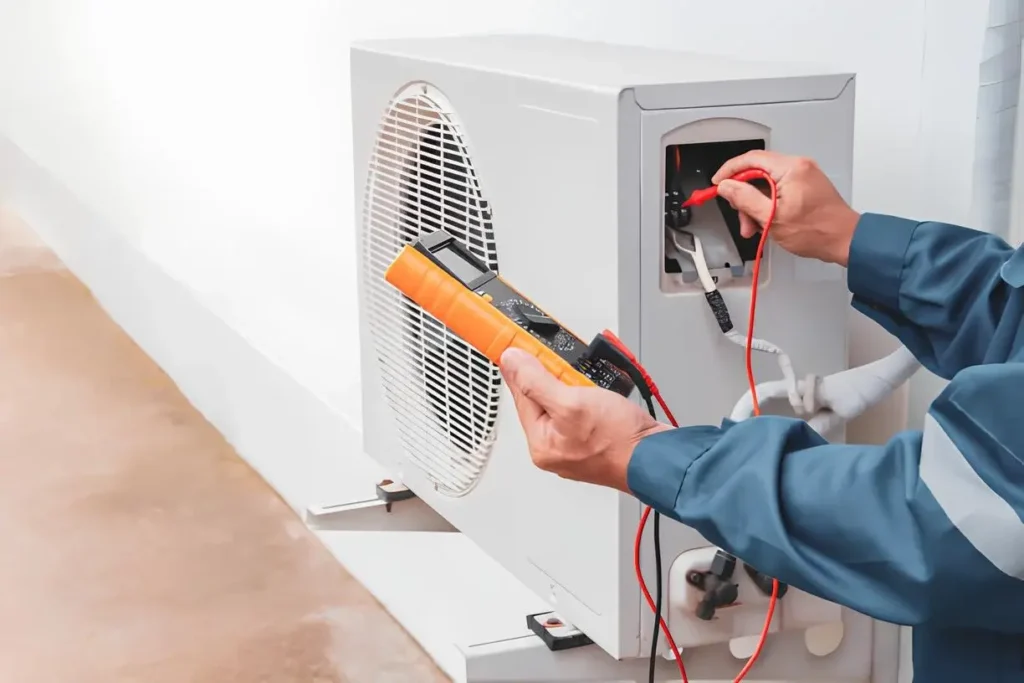
If you’re considering replacing an AC unit, you might be wondering how long the process will take. Replacing an AC unit is a significant investment in your home’s comfort and energy efficiency. The timeline for replacing an AC unit can vary depending on various factors, such as the type of unit, your home’s layout, and the availability of installation professionals in your area.
In this article, we’ll explore the typical timeline for replacing an AC unit, from the initial consultation to the final installation. Understanding the steps involved in replacing an AC unit can help you plan accordingly and make informed decisions about your home’s cooling system.
Whether you’re upgrading to a more energy-efficient model or replacing a unit that’s reached the end of its lifespan, knowing what to expect can make the process smoother and more efficient.
When considering the replacement of an AC unit, several factors can influence the time it takes to complete the process. Understanding these factors can help you plan effectively for the installation and ensure a smooth transition to your new cooling system.
The complexity of the installation process plays a significant role in determining how long it takes to replace an AC unit. Factors such as the intricacy of your home’s ductwork, the need for new wiring, or any required modifications to accommodate the new unit can impact the timeline.
In some cases, additional work may be necessary to ensure the new AC unit functions optimally, potentially extending the overall replacement time.
The size and type of the AC unit you choose for replacement can also affect the time it takes to complete the installation. Larger or more sophisticated units may require additional time for setup and configuration. Similarly, if you are upgrading to a different type of AC unit, such as switching from a window unit to a central air system, the installation process may take longer due to the adjustments needed to integrate the new unit into your home’s existing infrastructure.
When replacing an AC unit, the first crucial step is assessment and planning. Here, you’ll need to assess your current system, living space, and future cooling needs to plan the replacement effectively. Let’s break down the key steps involved in this process.
Assessing your current AC unit involves evaluating its age, efficiency, and performance. You’ll also need to consider any comfort issues in your home and energy bills to determine the right replacement unit. Planning includes selecting a suitable AC unit based on your cooling requirements, home size, and energy efficiency preferences. It’s essential to factor in any modifications or upgrades needed for seamless installation.
Next, you’ll need to research and source a new AC unit. Consider factors like energy efficiency ratings, size compatibility with your home, and any additional features you may need. Ensure that the new unit meets local building codes and regulations. You can consult with HVAC professionals for recommendations on reputable brands and models.
After acquiring the new AC unit, the next step is professional installation. Hiring experienced technicians is crucial for a successful replacement process. They will handle the removal of the old unit, installation of the new one, and any necessary adjustments or upgrades. Professional installation ensures the proper functioning and efficiency of your new AC unit.
Once the new AC unit is installed, it’s vital to conduct thorough testing and calibration. Technicians will check the system for proper airflow, refrigerant levels, and overall performance. They will calibrate the unit to ensure optimal cooling and energy efficiency. System testing helps identify any issues early on and ensures that your new AC unit operates at its best.
Lastly, familiarize yourself with the maintenance guidelines for your new AC unit. Regular maintenance is key to prolonging the lifespan and efficiency of your cooling system. Follow manufacturer recommendations for cleaning, filter replacement, and scheduled tune-ups. By adhering to maintenance guidelines, you can ensure consistent performance and lower energy costs.
By following these steps diligently, you can efficiently replace your AC unit and enjoy a comfortable and energy-efficient cooling system in your home.
When planning for an AC unit replacement, it’s essential to factor in various cost considerations to ensure a smooth and budget-friendly process.
By understanding these cost considerations and evaluating your specific requirements, you can make informed decisions when replacing your AC unit, ensuring a cost-effective and efficient cooling solution for your home.
By following these tips, you can streamline the process of replacing your AC unit, ensuring optimal performance, energy efficiency, and long-term savings.
Replacing your AC unit is a crucial decision that requires careful planning and execution. Understanding the process, assessing your cooling needs, and investing in an energy-efficient unit are key steps to a successful replacement. Consider important factors like unit type, size, energy efficiency, installation costs, and maintenance plans to make an informed choice.
Research different AC units, hire professional installers, and prioritize regular maintenance for optimal performance and long-term savings. By following these guidelines, you can ensure a seamless transition to a new AC unit that will keep your home comfortable and energy-efficient.
Replacing your AC unit is essential to ensure optimal cooling performance, energy efficiency, and cost savings in the long run.
Signs such as frequent breakdowns, inefficient cooling, and rising energy bills indicate it may be time for an AC unit replacement.
Consider factors like unit type, size, energy efficiency, installation costs, ductwork assessment, warranty coverage, and maintenance plans.
Professional installers ensure proper installation, system efficiency, and adherence to manufacturer guidelines for warranty coverage.
Regular maintenance such as filter replacement, system cleaning, and professional tune-ups help maintain optimal performance and extend the lifespan of your AC unit.